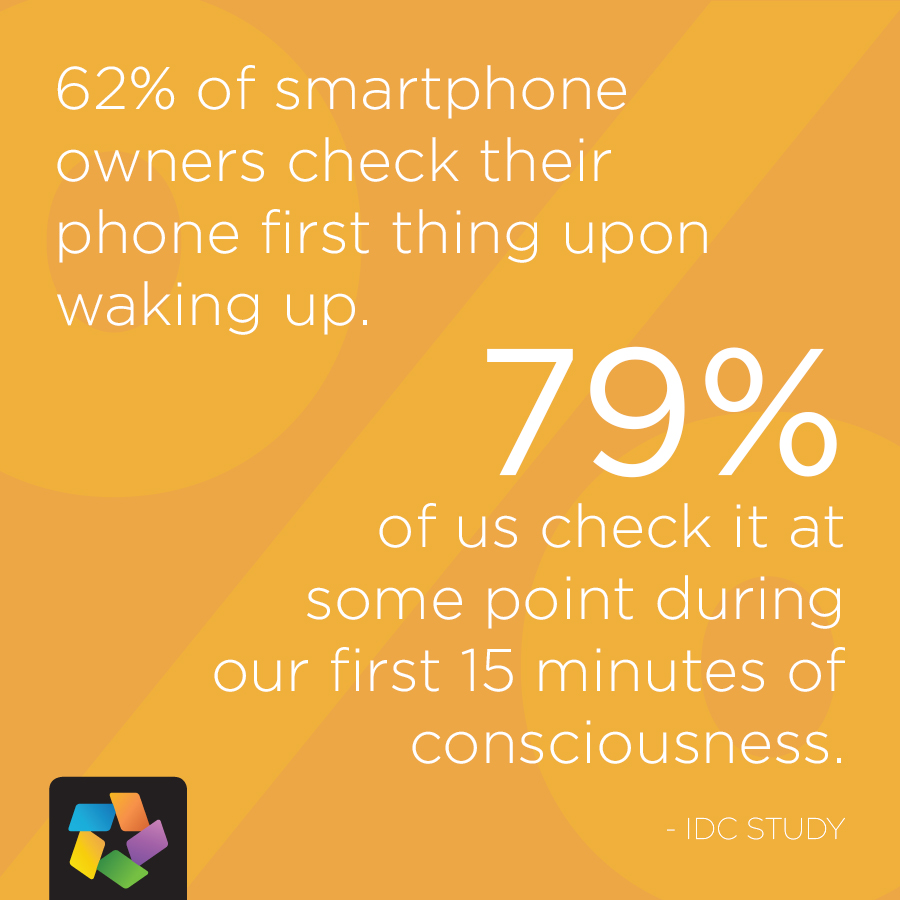Who would have thought that we’d have the kind of power in our hands when holding a modern smartphone? How could anyone 50, 25, or even 10 years ago envision a world in which everyone from the President of the United States to a street vendor in Mumbai would have a device that grants access to the near entirety of human knowledge? And why is it that most of us use these unspeakably awesome gadgets primarily to laugh at silly cats and take artsy photos of our food to prove we’re hip?
Mobile access to your business’ content is on the rise and shows no signs of slowing down
Regardless of how we use them, smartphones have had a truly meteoric rise over the past few years. Now more than ever, people are reading their email, staying in touch with friends and family members, interacting and getting involved in social media, and using programs like Facebook, Yelp, Twitter, Foursquare and others to determine which establishments they’ll eat at, shop from, and visit. It is crucially important that your business, regardless of its nature, has a strong and accessible mobile presence.
The current state of web usage on mobile devices

Once the iPhone took the world by storm shortly after it was released in 2007, many media analysts and experts predicted that mobile web usage would take over traditional (laptop or desktop) web usage in less than ten years. And while we’re not quite there yet here in 2013, mobile web usage is nevertheless on a huge rise. From 2010 to 2012, mobile web usage has increased from a mere 3.81% to 10.1% of all traffic.
And while that’s nowhere near the majority that some predicted nearly a decade ago, it is still a whopping %162.73 increase in just two years (according to a May 2012 reprt by Pingdom). Asia alone nearly tripled its mobile web traffic and Europe was not too far behind with a 183.43% spike. And as smartphones become smarter, faster, more adaptive and more web friendly, these numbers will continue to climb.
The total amount of time we are spending on our phones is what’s truly eye-opening. Web usage represents just a small portion of what people are actually doing on their phones – a paltry 20% compared to 80% on apps, many of which you can market your business on. According to a recent study by IDC, 62% of smartphone owners check their phone first thing upon waking up, while 79% of us check it at some point during our first 15 minutes of consciousness. 70% of us check Facebook from our mobile phones every single day (averaging 13.8 visits per day), and 78% use their device to check, send, and receive email.
How to reach your customers
So as a business owner, what steps should you take to ensure that you’re reaching this growing portion of the demographic that is arguably addicted to their smartphone?
1. Remove barriers.
For starters, be sure to have your site optimized for mobile devices (phones and tablets). All of us have visited a site that looks absolutely atrocious on our mobile device and/or is a bear to operate. A site too heavy in Flash can take too long to load, require mobile users to download plug-ins, or be completely unreadable for those using Apple mobile devices. There are dozens of software solutions that can optimize your site for mobile devices without putting too much of a strain on your web team (some of which claim to take only 30 seconds for $5 per month – check out https://bmobilized.com).
Having a mobile-optimized site is not only easy, it ensures that people can easily navigate your website and engage in your content, regardless of which device they’re using to reach it. And since online sales originating from mobile devices generated over $10 billion last year, it’s even more vital if you have any sort of e-commerce or shopping cart functionality on your site.
Removing as many barriers as possible for potential customers interested in your business should always be seen as essential, and optimizing your website for mobile users is one of the largest obstacles you can easily toss by the wayside.
2. Ramp up your social media presence.
Ensure that you have a presence on all applicable social media platforms. As the IDC study referenced above noted, Facebook plays a huge part in the average smartphone user’s day, so you absolutely need to be seen where their eyeballs are for a majority of their smartphone experience. Facebook is crucial, but don’t forget about FourSquare, Yelp, Yahoo! Trip Advisor, Pinterest and others. Foursquare’s gamification of visiting and spending time in brick-and-mortar outlets proved that incentivizing your customers with bragging rights and rewards works.
Although Yelp is intimidating to some business owners as they fear overly negative reviews, you will never be able to fully and 100% control your social media – it’s defined by its interactivity and engagement with your followers, and short of personally creating dozens of fake accounts, there isn’t much you can do to manage what they do or say online. Having a Yelp account where potential customers can get directions to your location, read user reviews, and get a sense of what goods/services you offer is exceedingly beneficial as many folks use Yelp as their first go-to litmus test of where to shop.
The bottom line is that it’s more than worth the investment of time to set up these accounts and manage them because while a huge amount of people use social media multiple times a day, those that do it from their mobile devices can be reached at anytime, anywhere.
3. Communicate via email and text.
Don’t overlook more “traditional” online marketing activities, such as email newsletters and mass text message campaigns. Being able to briefly communicate with your contacts with a quick and easy-to-send text (especially covertly while at work or school where voice calls are out of the question) is a huge reason why smartphones are as popular as they are. And as noted above, over 75% of smartphone users check their email regularly. Creating and maintaining a solid list of your customers’ contact information, especially email and cell phone numbers, will allow you to stay in contact in a wider variety of means.
Programs like iContact, Constant Contact, and Mail Chimp are affordable (or possibly free, depending on your number of contacts and usage), and are great database management and email marketing solutions that enable even semi-computer literate business owners to create customized and aesthetically appealing email newsletters to send to their customers.
You can use these to notify them of future sales or promotions, conduct surveys to see what they are looking for from your business, or even provide incentives for them to refer friends your way. And with a solid database of cell phone numbers, you can also send shorter, more truncated messages to your customers with a variety of SMS marketing programs. These are ideal for more time-sensitive messages, such as a special guest stopping by your business unexpectedly, or reminding people that a sale or promotion only has a few hours left.
4. Tweet to stay in touch and show personality.
Speaking of truncated messages, Twitter and its 140-character limit is widely viewed as on of the most effective forms of mobile marketing. While not technically SMS texting, it is viewed and operated in much the same way. With well over half a billion active users and hundreds of millions of Tweets sent daily, it would be a glaring oversight not to have a footprint on Twitter and use it as an additional vehicle to stay in touch.
Plus, unlike regular SMS text messages, tons of people read and send Tweets from their desktops or laptops. Trending topics on Twitter can be one of the fastest means of hearing about and connecting to what is happening in the world, and if you’re not on it, you are missing out on lending an additional layer of connectivity, reliability and personality to your business.
As the folks at Twitter say, “People also turn to Twitter to talk about your business and your industry. This gives you powerful context to connect directly with present and future customers in real time.” Think about how you can utilize Twitter and other social media channels differently to maximize your awareness and respond swiftly to your customers’ needs.
Mobile is here to stay
If you ever have a spare few minutes, walk outside your business (or just pick a place to people-watch if you’re online in nature) and try to get a rough estimate as to how many people are either talking on or looking at a smartphone. Hopefully you won’t see anyone walking into a utility pole while text-walking, but it should come as no surprise that the percentage is fairly high.
For better or worse, we are becoming addicted to these marvels of modern technology carried around in our purses and pockets, and you are doing yourself and your business a huge disservice by ignoring the platform. With a few simple steps and a small amount of planning, you will ensure that you stay relevant and accessible as the percentage of mobile web usage inevitably continues to skyrocket.





Leave a Comment